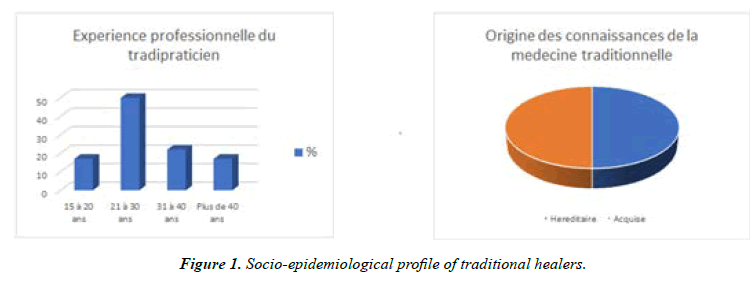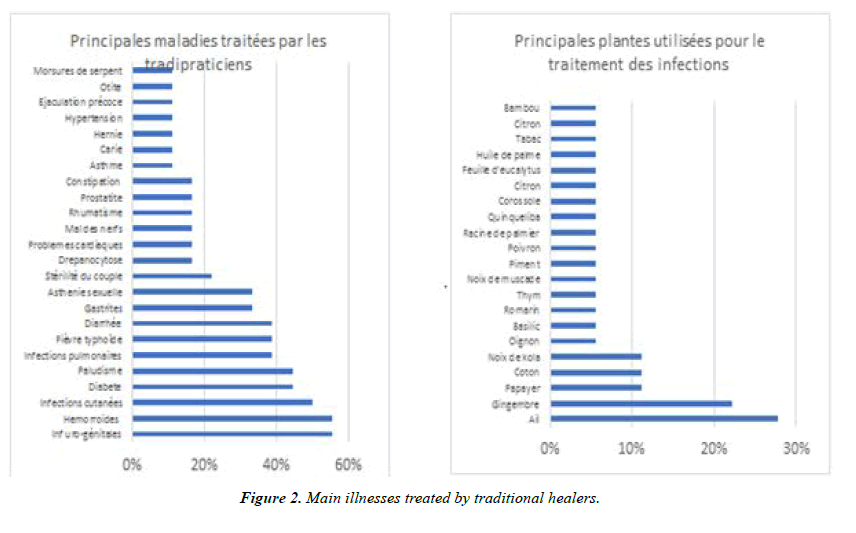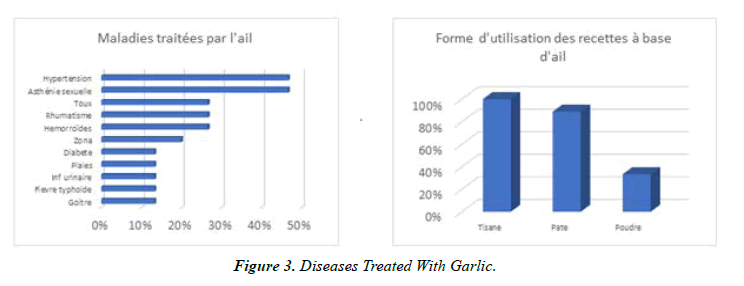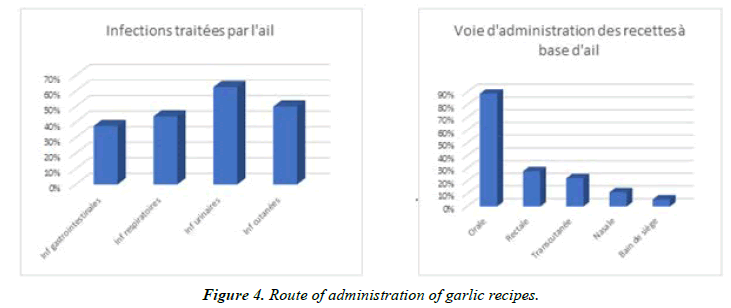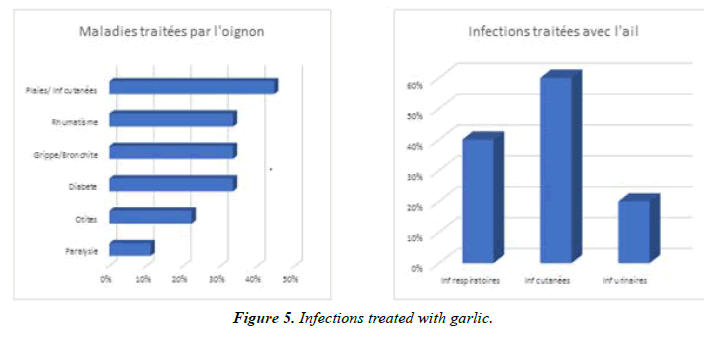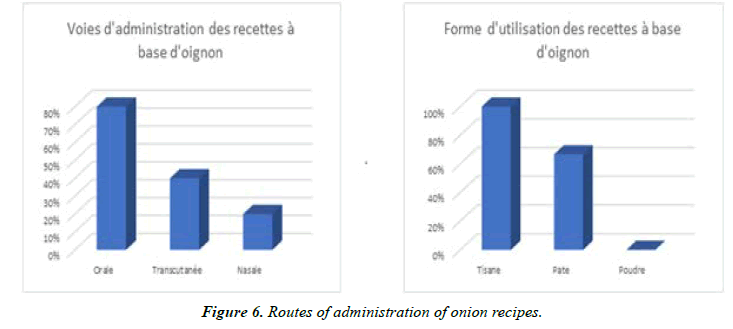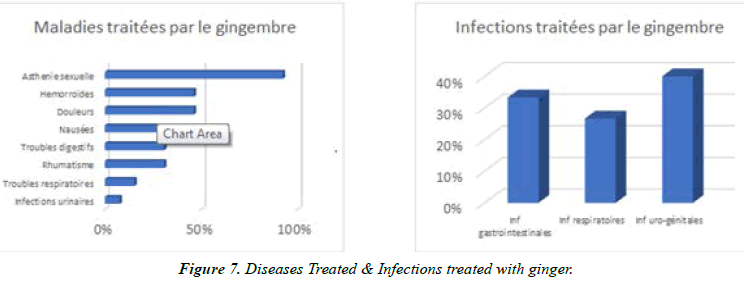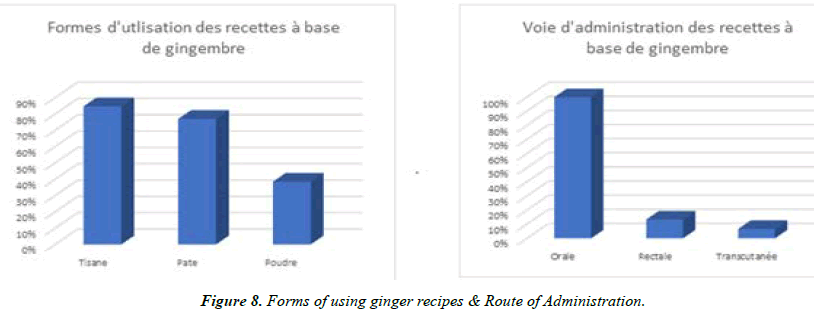Research Article - Asian Journal of Biomedical and Pharmaceutical Sciences (2022) Volume 12, Issue 89
Ethno botanical study of three vegetable plants used for the treatment of infections in Congo.
Mankele Ray1, Samlan Nadege2, Mahouele Cesar3*, Abena Ange Antoine4
1Doctoral Student in Biomedical and Pharmacology Laboratory of the Sciences and Health Faculty, Marien Ngouabi University, Brazzaville, Republic of the Congo
2Senior Lecturer in Biomedical and Pharmacology laboratory of Sciences and Health Faculty, Marien Ngouabi University, Brazzaville, Republic of the Congo
3Master Student of Natural Sciences Department of Superior Normal School, Marien ngouabi University, Brazzaville, Republic of the Congo
4Professor, Biomedical and Pharmacology Laboratory, Sciences and Heath Faculty, Marien Ngouabi University, Brazzaville, Republic of the Congo
- Corresponding Author:
- Mahouele Cesar
Master Student of Natural Sciences
Department of Superior Normal School
Marien ngouabi University, Republic of the Congo
E-mail: Mahouelemimuini@yahoo.fr
Received: 12-April-2022, Manuscript No. AABPS-22-60560; Editor assigned: 22-April-2022, PreQC No. AABPS-22-60560(PQ); Reviewed: 06-May-2022, QC No. AABPS-22-60560; Revised: 09-May-2022, Manuscript No. AABPS-22-60560(R); Published: 16-May-2022, DOI:10.35841/2249-622X.89.123
Citation: Ray M, Nadege S, Cesar M, et al. Ethno botanical study of three vegetable plants used for the treatment of infections in Congo. Asian J Biomed Pharmaceut Sci. 2022;12(89):123.
Abstract
Antibiotic resistance is nowadays a public health problem for which the development of new molecules is one of strategic orientations. Medicinal plants that have been used since immemorial time could be a great alternative. In this order, an ethno botanical study was carried out in Brazzaville in Congo in 2018, with 50 traditional medicine practitioners, to assess the use in traditional medicine of 3 vegetable plants, including in the event of bacterial infections. The results obtained show that garlic, onion and ginger are used in traditional Congolese medicine for the management of several diseases including urogenital, gastrointestinal, respiratory and skin infections. These results could serve as a basis for subsequent studies aimed at enhancing medicinal plants and their contribution to the fight against antibiotic resistance.
Keywords
Garlic, Onion, Ginger, Bacterial infections.
Introduction
In a global context marked by the development of antimicrobial resistance, which affects a wide range of microorganisms and whose increased prevalence threatens human and animal health, the World Health Assembly adopted in May 2015 a plan to global action to combat antimicrobial resistance, one of the objectives of which is to increase investment in the development of new drugs, diagnostics, vaccines and other interventions [1]. However, for almost 30 years, the scientific community has not developed new classes of antibiotics. This is why the use of drugs derived from medicinal plants offers an alternative that could be exploited in the fight against antimicrobial resistance, especially since for several million people, herbal drugs, traditional treatments and traditional practitioners are the main, if not the only, source of health care because they are close and easily accessible, financially affordable, culturally acceptable and trusted by large numbers. The inventory of medicinal plants and traditional therapies and their scientific study will enable them to be introduced in a new form into modern medicine in order to better meet local needs, in a particularly difficult economic context [2].
Medicinal plants include vegetable plants, which are used both in food and in therapy. At the origin of the so-called food category (the drug originates from the contraction of two words: Food + Medicine), they are commonly consumed since they are part of eating habits and provide beneficial effects on health. Among the most common is garlic, cabbage, green tea, soybeans, spinach. In the Congo, no study has been carried out on the use of vegetable plants in the management of diseases, especially microbial infections. This is why this study was carried out in order to assess the use of 3 vegetable plants present in the diet in Congo and likely to contribute to the management of infections in traditional medicine: garlic, onion and ginger [3-5].
Garlic (Allium sativum) is a plant of the Liliaceous family, the main part of which is the bulb, made up of cloves surrounded by a very thin sheath. It finds its origins in Central Asia and quickly conquered all continents, first for its medicinal virtues, then for its culinary properties. Garlic is regularly used in cooking as a flavoring; it is part of the aromatic base of many cuisines around the world. In Congolese cuisine, garlic is cooked in many recipes for meats, poultry, fish, vegetables, etc. Recent work on garlic mainly focuses on its antihypertensive and lipid lowering effects, exhibiting a beneficial action on cardiovascular pathologies and especially on those related to age. Its powers as an antiplatelet agent and its antioxidant properties have also been studied. Garlic is listed in the European Pharmacopoeia with a control monograph [6-10].
The onion (Allium cepa), is a species of biennial herbaceous plant of the Amaryllidaceous family, widely and for a long time cultivated as a vegetable plant for its bulbs of strong flavor and smell and for its leaves. Onions have been consumed for millennia all over the world to combat stomach distension, aid digestion and as a well-known antidiarrhoeal. It is also the aromatic flavor of Congolese cuisine, found in almost all culinary recipes. It is eaten cooked or raw, in the form of a salad. Modern research has shown onion to be a major food in the prevention of cardiovascular disease. It has hypo cholesterolaemic and hypotensive properties. It is an antiplatelet drug. It also has important antioxidant properties. It contains sulfur compounds which have hypoglycemic properties and are therefore very interesting for diabetics. Like garlic, shallot, chives, scallions, it has excellent anticancer properties.
Ginger (Zingiber officinale) is a spice from the Zingiberaceae family, which has been widely used for several millennia by traditional Chinese and Ayurvedic medicine, in particular for its aphrodisiac properties [11-13]. But studies and research on ginger have multiplied in recent decades, highlighting digestive, and antioxidant, anticancer, anti-inflammatory, fluidifying, anti-cholesterol, antiemetic and antiulcer properties. Fresh ginger is highly prized by the Congolese people who consume it as a drink made from peeled rhizome, crushed and then mixed in water, commonly called "Tangawisi". But rhizome powder is also used for the mild spicy flavor it gives to dishes.
Materials and Methods
The ethno botanical survey of 3 vegetable plants was carried out in the period from August to September 2018 in Brazzaville, Congo. The data were collected from 50 traditional healers selected from the file of the Federation of traditional healers of Brazzaville. The information was collected through semistructured interviews based on a survey form on the sociodemographic profile of the traditional healer, the main pathologies treated and the use of the 3 plants concerned for the management of diseases. The data collected were analyzed using descriptive statistics of the numbers expressed as an average and as a percentage by the "Excel" software.
Result
Socio-epidemiological profile of traditional healers
Data was collected from 50 traditional healers, 83% of whom were male and 17% female. Most of these traditional healers were in a common-law relationship (44%) or married (22%). 72% of these traditional healers had a secondary level education and 12% a university level. None were illiterate. All those interviewed had a long experience in traditional medicine with an average of 29.4 years of practice. The least experienced had been practicing for 16 years and 50% between 21 and 30 years. 67% of those questioned had traditional medicine as their only activity, 33% having another professional activity. The average number of patients received per week per traditional practitioner is 22.
They work in all the districts of Brazzaville with predominance in Makelekele (33%) followed by Moungali and Poto-Poto (17%). 35% work in their family home.
In 50% of cases, traditional healers received their knowledge through intra family transmission, most often from generation to generation. For the rest, it is knowledge acquired either by "divine inspiration" or by learning from a "master" (Figure 1).
All traditional healers use herbal treatments and only 11% animal skin treatment. 72% also resort to prayer. 81% go to the laboratory for confirmation of their diagnosis. Out of the 10 main diseases treated by traditional healers, 5 are infectious diseases, namely urogenital infections, skin infections, pulmonary infections, malaria and typhoid fever. But there are also hemorrhoids, diarrhea and gastritis. The main plants used by traditional healers for the treatment of these infections are garlic, ginger, papaya, cotton and kola nut (Figure 2).
Use of garlic in the treatment of infections
Garlic is used in traditional medicine to treat many conditions including high blood pressure, sexual asthenia, rheumatism, hemorrhoids and coughs. It is most often used in combination (89% of cases). The most used form is a decoction of the chopped garlic clove. But traditional healers also use it in paste and rarely in powder (Figure 3).
As an anti-infectious agent, garlic is used to treat urinary tract, skin, respiratory and gastrointestinal infections. The main route of administration is oral, but some preparations are also administered rectally, transcutaneously, nasally and even as a sitz bath (Figure 4).
Use of onion in the treatment of infections
Onion is little used by traditional healers, most often for the treatment of wounds and skin infections. It is also sometimes used in the case of rheumatism, flu or management of diabetes. A few rare traditional healers also use it for the treatment of urinary tract infections (Figure 5).
Onion is used alone or in combination, as a decoction or paste, administered mainly orally but also transcutaneous and more rarely nasally. The powder form is not used for onion (Figure 6).
Use of ginger in the treatment of infections
Ginger is mainly used by traditional healers for the treatment of sexual asthenia. Some also use it for digestive disorders, the management of hemorrhoids and aches and pains such as low back pain, painful periods and even toothache. Very little used as an anti-infectious agent, 67% still use it in the management of gastrointestinal infections and 53% in uro-genital infections (Figure 7).
The use of ginger is mainly in the form of a decoction and paste, but in 38% of cases also in powder. These recipes are administered primarily orally (Figure 8).
Discussion
This study consisted in collecting information on the use of 3 vegetable plants by traditional healers in Congo. This information was collected from 50 traditional healers, members of the federation of traditional healers of the Department of Brazzaville, an organization recognized by the State and support institutions as representing the entire community of traditional healers. This type of sampling is the same as that used by Lulekal et al in Ethiopia [14,15] and Traoré et al in Burkina Faso. The workforce selected for the study joins that of Nzuki in 2016, which had also carried out its study on 51 traditional healers in the DRC [16] and is not far from that of Ait Ouakrouch in Morocco [3], which worked on 60 herbalists or Traoré in Burkina Faso who had worked on 45 traditional healers.
The information collected shows a clear predominance of the male sex among traditional healers; which is not specific to the Congo since AIT OUAKROUCH, Nzuki, Lulekal and Traoré had already observed it. However, it is contrary to what is observed in Benin where women represent more than half of traditional healers [14]. The male predominance could be explained by the patrilineal transmission of ancestral knowledge in the Bantu civilization [9], where the secret had to remain in the family and therefore transmitted from father to son or from uncle to nephew. In our study, 50% received their knowledge through this family transmission. However, intra-family transmission is no longer exclusive since 50% of our traditional healers have acquired their knowledge through training with "masters". In addition, traditional medicine seems to be opening up more and more to literate practitioners, with even 12% of academics in our study. These traditional healers also carry out other professional activities for 33% of them. This level of education could explain the significant use of the laboratory observed during our study. In fact, 81% of the people surveyed said they used the laboratory to confirm the diagnosis; which is very important in the management of infections.
The marital status which constitutes in Bantu societies a sign of notoriety was also verified during our study. 67% of traditional healers surveyed live in union and can therefore be considered responsible in the eyes of society. Nzuki, who worked in the same Bantu environment, made the same observation. This notoriety is also conferred by the duration of exercise which, in our study reached an average of 29.4 years including an average of 9 years of exercise on the same place of establishment.
Among the main diseases treated by traditional healers are gynecological infections, hemorrhoids, skin infections, diabetes, and malaria. But of all the diseases treated, only 25% represent communicable diseases, the rest being made up of non-communicable diseases. The practice of traditional medicine is above all based on the use of medicinal plants, very often associated with spiritual therapy. This is consistent with the free encyclopedia Wikipedia's definition of traditional medicine as a discipline involving herbalism and African spirituality. The peculiarity in the Congo is the replacement of this African spirituality considered as witchcraft by Christian spirituality. In our study, 72% of traditional healers said they resorted to prayer for the treatment of certain conditions. A total of 30 plants were reported to be used for the treatment of infections. Taking into account the number of times the plant was cited by a traditional healer, the most used plants are garlic (28%), ginger (22%), papaya, and cotton and kola nut (11 %).
Garlic is therefore the treatment not excellence for infections in traditional Congolese medicine, generally used in combination, in the form of a decoction but also as a powder, administered mainly orally, but sometimes also rectally, nasally, transcutaneously and even under form of sitz baths for female genital infections. Garlic is widely used in genitourinary infections including syphilis and gonorrhea, skin infections including infected wounds, respiratory infections such as flu and coughs and gastrointestinal infections such as typhoid fever or dysentery. This antibiotic action has already been recognized in herbal medicine for cases of bronchitis or seasonal infections, in urinary tract infections and in certain skin infections [5]. It would be due to one of its main components, allicin, which has powerful antimicrobial properties in vitro, in particular on Staphylococcus aureus, Shigella sonnei, Erwinia carotovora, Mycobacterium tuberculosis, Escherichia coli, Pasteurella multocida, Proteus, Streptococcus faecalis, Pseudomonas aeruginosa, Candida, Cryptococcus, Rhodotorula rubra, Toruloposis, Trichosporon pullulans, and Aspergillus niger [10].
But, apart from infections, garlic is also used in traditional medicine for the management of arterial hypertension, sexual asthenia, rheumatism, hemorrhoids, diabetes and even goiter. This use is perfectly consistent with the virtues attributed to garlic in the French pharmacopoeia [7] in particular its beneficial effects against pain, skin conditions, digestive and respiratory problems, hypercholesterolemia or disturbances of coagulation and vascular disorders, such as high blood pressure.
The onion remains very little used in traditional medicine in the Congo, mainly in the treatment of wounds and other skin conditions, in rheumatism, diabetes and the treatment of bronchitis and influenza. These indications correspond to those mentioned by Jean Pelissier on his blog devoted to traditional Chinese medicine. Onion is used in the form of a decoction and sometimes a paste and administered orally and transcutaneously. In addition to skin infections, traditional healers in the Congo use it for the treatment of certain respiratory infections and more rarely in the case of urinary infections. The inhibiting action of the aqueous extract of onion on certain bacteria had already been demonstrated. This is the case of Serratia marcescens commonly implicated in urinary tract infections and wound infections, Escherichia coli responsible for certain urinary tract infections, Streptococcus, responsible for angina and skin infections and Salmonella typhi responsible for typhoid fever [1]. According to Marina Cluysen, onions are a natural antibiotic: onions eaten raw help fight bacteria in the mouth. Thus, they neutralize the negative action of cavities and bacteria on the gums. It is also effective against cough [6].
For its part, although mainly used for the management of sexual asthenia, hemorrhoidal crises and nausea, ginger is also used in traditional medicine in Congo for the treatment of urogenital, gastrointestinal and respiratory infections. It is administered in the form of a decoction, paste and powder, most often alone, mainly orally and more rarely rectally and transcutaneously. Blama et al in 2013 had found that zingiberaceae occupied the 3rd place among the aromatic and medicinal plants most used in the treatment of gastrointestinal diseases by natives in Algeria [8], while Camille Cocenas Pereira ranks it in 4th position among the 10 miracle natural remedies to treat infections, list in which garlic occupies the 1st position [11]. The use in the prevention of nausea and vomiting characteristic of motion sickness, pregnancy or following surgery has long been recognized [12] and ginger is also a good ally for relieving minor digestive disorders [4] as found in our study.
Conclusion
The ethno botanical survey carried out in Brazzaville showed that food plants are used by traditional healers for the management of diseases and particularly bacterial infections. This medicine is practiced mainly by men, holders of traditional knowledge in societies with patrilineal transmission but also by acquiring knowledge. The use of garlic, onion and ginger in traditional medicine in the Congo is in accordance with the indications retained for centuries in different traditional societies and confirmed by modern research. These foods therefore find their place in the range of natural antibiotic drugs, especially since they are simple plants, easy to grow and well anchored in the dietary habits of local populations. The results obtained could serve as a basis for subsequent studies aimed at experimentally evaluating the biological and chemical potential of these plants and the development of medicinal plants for the treatment of bacterial infections with the aim of combating antibiotic resistance.
References
- Abdou IA, Abou-Zeid AA, El-Sherbeeny MR, et al. Antimicrobial activities of Allium sativum, Allium cepa, Raphanus sativus, Capsicum frutescens, Eruca sativa, Allium kurrat on bacteria. Qualitas Plantarum et Materiae Vegetabiles. 1972;22(1):29-35.
- Adjanohoun E, Cusset G, Issa Lo KA, et al. Traditional medicine and pharmacopoeia database: instructions for data collection and entry (2nd ed.). Paris: ACCT. 1994.
- Beniaich G, Salim R, Ech-Chihbi E, et al. Ethnobotanical survey about medicinal plants used in traditional treatment of insomnia, asthenia, and oral and gum infections in the region Fez-Meknes, Morocco. Environmental Sci Pollution Res. 2022;29(1):133-45.
- Akinola AA, Ahmad S, Maziah M. Total anti-oxidant capacity, flavonoid, phenolic acid and polyphenol content in ten selected species of Zingiberaceae rhizomes. African J Traditional, Complementary Alternative Med. 2014;11(3):7-13.
- https://www.doctissimo.fr/html/sante/phytotherapie/plante-medicinale/ail.htm
- Blama A, Mamine F. Ethnobotanical study of medicinal and aromatic plants in southern Algeria: Touat and Tidikelt. In5. Int Symposium Aromatic Med Plants, SIPAM. 2013;17.
- Bonhomme J. Initiatory transmission and tradition in Central Africa. In Annals of the Fyssen Foundation. 2007;21:48.
- Caporaso N, Smith SM, Eng RH. Antifungal activity in human urine and serum after ingestion of garlic (Allium sativum). Antimicrobial Agents and chemotherapy. 1983;23(5):700-2.
- Daily JW, Yang M, Kim DS, et al. Efficacy of ginger for treating Type 2 diabetes: A systematic review and meta-analysis of randomized clinical trials. J Ethnic Foods. 2015;2(1):36-43.
- Ding SH, An KJ, Zhao CP, et al. Effect of drying methods on volatiles of Chinese ginger (Zingiber officinale Roscoe). Food and Bio Products Proces. 2012;90(3):515-24.
- Dougnon TV, Attakpa E, Bankolé H, et al. Ethnobotanical study of medicinal plants used against a contagious skin disease: human scabies in the South -Benign. Pharm Traditional Afr Med. 2017;18:16-22.
- Lulekal E, Kelbessa E, Bekele T, et al. An ethnobotanical study of medicinal plants in Mana Angetu District, southeastern Ethiopia. J Ethnobiol Ethnomed. 2008;4(1):1-0.
- Nzuki Bakwaye F. Ethnobotanical research on medicinal plants in the Mbanza-Ngungu Region, DRC (Doctoral dissertation, Ghent University).
- Health World O. WHO Strategy for Traditional Medicine 2014-2023. World Health Organization; 2013.
- Health World O. Global action plan to combat antimicrobial resistance.
- Sharma VD, Sethi MS, Kumar A, et al. Antibacterial property of Allium sativum Linn.: in vivo & in vitro studies. Ind j Experimental Biol. 1977.
Indexed at, Google Scholar, Cross Ref
Indexed at, Google Scholar, Cross Ref
Indexed at, Google Scholar, Cross Ref
Indexed at, Google Scholar, Cross Ref
Indexed at, Google Scholar, Cross Ref
Indexed at, Google Scholar, Cross Ref
Indexed at, Google Scholar, Cross Ref
